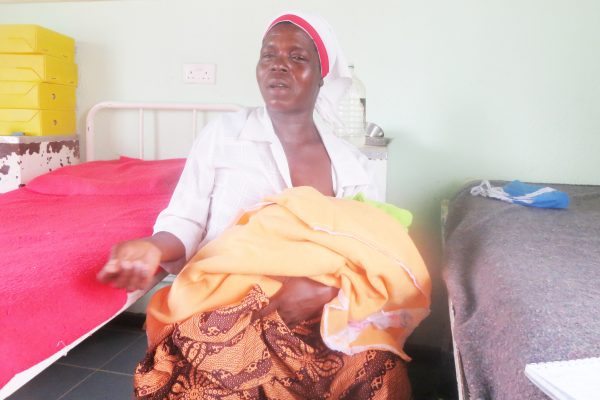
Eliminating paediatric HIV is not the work of a day or even a year. It requires concerted efforts on many fronts with government, civic society and citizen leaders all pulling together.
By Moses Mugugunyeki
On the eve of World Aids Day last year, all these fronts converged in Bulawayo for the launch of the five-year Elimination of Mother-to-Child Transmission (EMTCT) of HIV and Syphilis in Zimbabwe. This comprehensive EMTCT strategy will be guided by the Start Free, Aids Free and Aids Free Framework.
The launch, which was held jointly with the official release of the 2016 HIV statistics, provided a national platform for high-level advocacy, reflection and planning around the virtual elimination of new HIV infections in children and keeping mothers alive.
During the deliberations, it was agreed that most importantly, it will require fully tapping the largest and most natural group of allies women have — men. It was also agreed that as a country, there was need to address the resource gap, if Zimbabwe was to meet the PMTCT global target.
Parent-to-child transmission remains the second commonest route of HIV transmission in Zimbabwe and the highest cause of HIV infection among children. It is sad to note that many of children continue to be born with HIV infection every year in Zimbabwe at a time when there is increasing evidence that the elimination of new infections among children is possible.
According to the Ministry of Health and Child Care, 1,33 million people were living with HIV and Aids in 2016, of which 1,26 million were adults.
There were 138 642 children below 15 years that were HIV infected in 2011, which represented nearly 10% of the total number of adults and children that were infected with HIV. However, there has been a decrease in the number of HIV-infected children between 2009 and 2016, which could reflect increased mortality due to limited access to antiretroviral treatment. Children under 15 years of age account for 5,5% (72 900) of all people living with HIV.
- Chamisa under fire over US$120K donation
- Mavhunga puts DeMbare into Chibuku quarterfinals
- Pension funds bet on Cabora Bassa oilfields
- Councils defy govt fire tender directive
Keep Reading
Last year, the proportion of women living with HIV and Aids as a part of HIV-infected adults remained at 17%, while men constituted 10%.
Zimbabwe is making headway in meeting the United Nations’ 90-90-90 ambitious target to help end the HIV and Aids pandemic by 90% in 2020.
National PMTCT and paediatric HIV care and treatment coordinator in the Ministry of Health and Child Care, Angela Mushavi, said Zimbabwe was one of the few countries that have written fairy paediatric treatment tales, accomplishing success. She said there was hope of ensuring the universal coverage for children to meet the global target.
“Transmission of mother-to-child transmission of HIV as of last year stood at 5,8%, which is less than 1% point to reach the EMTCT global target of less than 5%. This has been due to a highly successful national programme of EMTCT that is being led by the Ministry of Health and Child Care with support and in collaboration with development partners, civil society and communities,” she said.
Mushavi said new infections in children should be tackled in a way that reaches all corners of the country.
She noted socio-economic and socio-cultural factors as the biggest barriers to the success of the PMTCT programme.
“One of the setbacks is that most women attend antenatal care for the first time too late, with some visiting the health centres when they are seven months pregnant. Early antenatal visits help mothers to make sure they receive maternity healthcare that takes into account their health needs and preferences, including HIV testing and counselling,” she said.
Mushavi said in order to meet the global PMTCT target, there was need for conserted efforts from everyone and men should not sit and do nothing.
“Male involvement in PMTCT programmes is not pleasing. Only 23% of males accompany their partners for antenatal care in Zimbabwe. The role of men in society is unquestionable. It is for this reason that men should take their place in the HIV response, both for their own health as well as in support of women and children.”
Mushavi’s sentiments were echoed by Innocent Sibanda, who is the clinical referral facilitator at Singwango Clinic in Insiza district, Matabeleland South, who told The Standard Style during a recent media tour that very few men accompany their wives on visits to antenatal clinic.
“Women who are supported by their male partners are more likely to consistently visit antenatal clinic, as well as postnatal clinics.”
“When the male partner is roped in, then both partners get to know their status, and even dangerous practices like forced breastfeeding or forced early weaning are unlikely; the baby’s chances of healthy survival are better than when the woman is left alone.”
Mushavi said they were dealing with issues to do with resources in order to meet the target.
“The 1% mark left is not easy to achieve, hence the reason why we launched the five-year comprehensive EMTCT strategy on the eve of World Aids Day last year. Although we have received assistance from the government and our partners, we need to address the resource gap to ensure the universal coverage for mothers and children to meet the global target,” she said.
She said the scrapping of user fees would help expectant mothers to access maternal care and reduce maternal mortality.
It is clear that effective investments in prevention of new HIV infections among children need to be accompanied by investment in gender and culture transformative approaches in order to overcome barriers to the uptake of health services.
Systematically assessing and addressing gender and cultural issues can significantly contribute to the goal of eliminating new HIV infections among children by 2020 and keeping their mothers alive. l Email: [email protected]











